CW87 Jan-Februry, 2024
Chigasaki had the largest excess of in-migrants over out-migrants among all the nation’s similar-sized municipalities in 2023
Chigasaki City attracted 2,520 net in-migrants in 2023. That is, the number of people moving to the city exceeded that of people moving out of the city by 2,520 last year. The figure was the ninth largest of all Japan’s municipalities, and the largest in Japan except for all the wards of Metropolitan Tokyo and ordinance-designated cities. This was announced by the Ministry of Internal Affairs and Communications on January 30 (Tue).
Of the 2,520, the 0~14, 30~44, and 45~64 age brackets accounted for 26.5% (3), 49% (3) and 19% (5). () shows the ranks in all the municipalities of the nation.
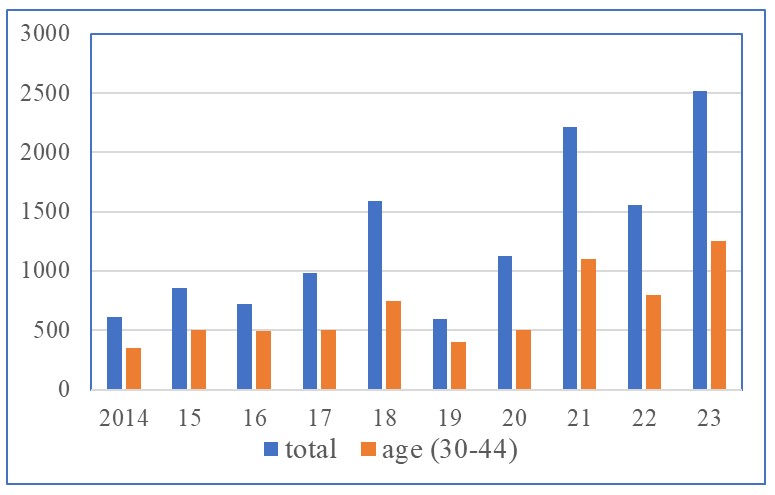
The graph above shows the numbers of all in-migrants and the 30-44 age bracket have been on an increasing trend, and the age bracket accounted for nearly half or more of the in-migrants every year. Were they attracted by, for example, proximity to Yokohama, Tokyo and Izu, a mild climate, and a peaceful atmosphere? These figures suggest people’s inflow into the city will continue for a while.
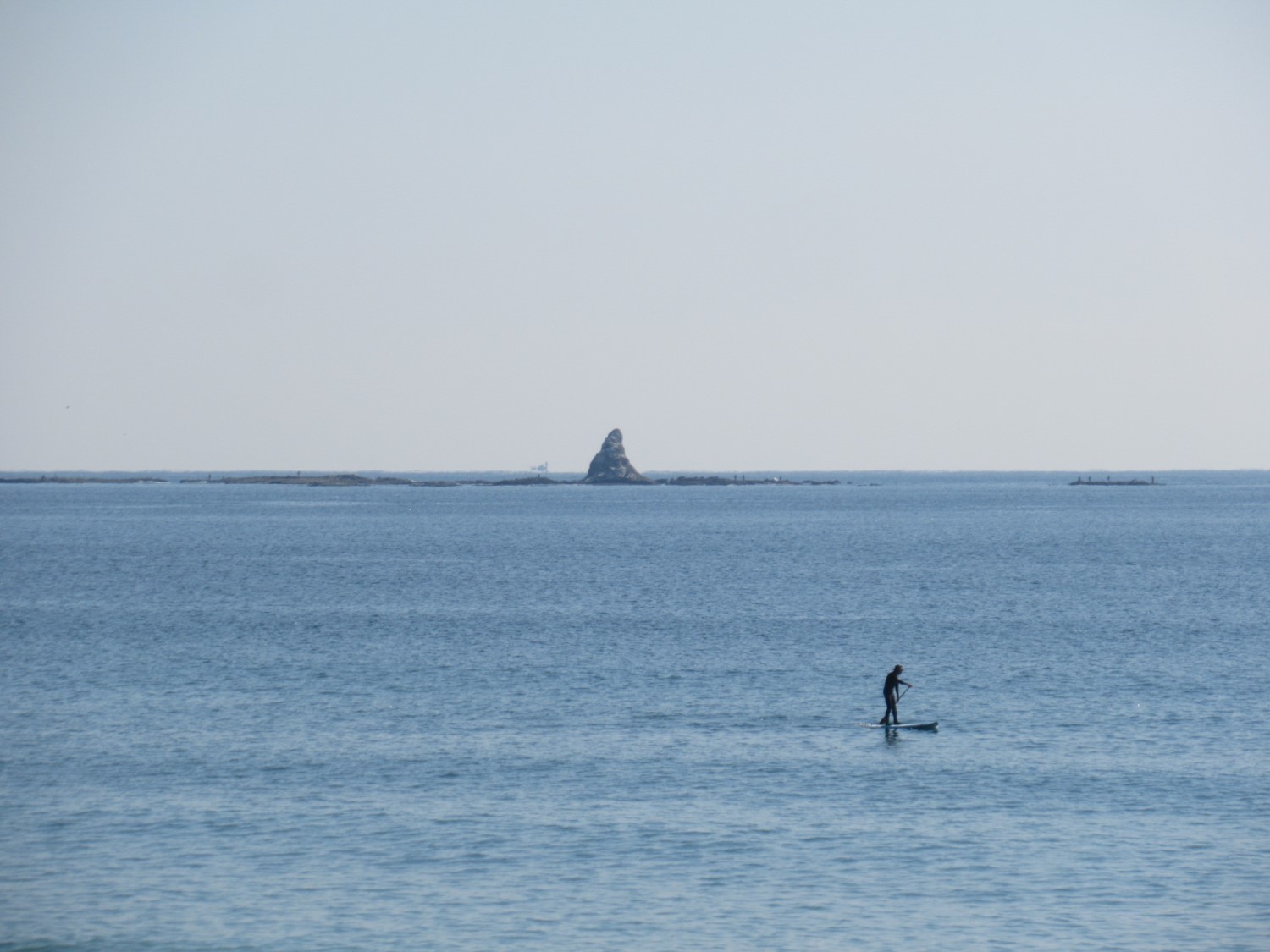
As for other cities nearby, Hiratsuka was second after Chigasaki at 2,499, and Fujisawa was 26th at 1,262. At a prefecture level, Kanagawa was second in the nation at 28,606 after Metropolitan Tokyo.
Be careful about Bicycle thieves
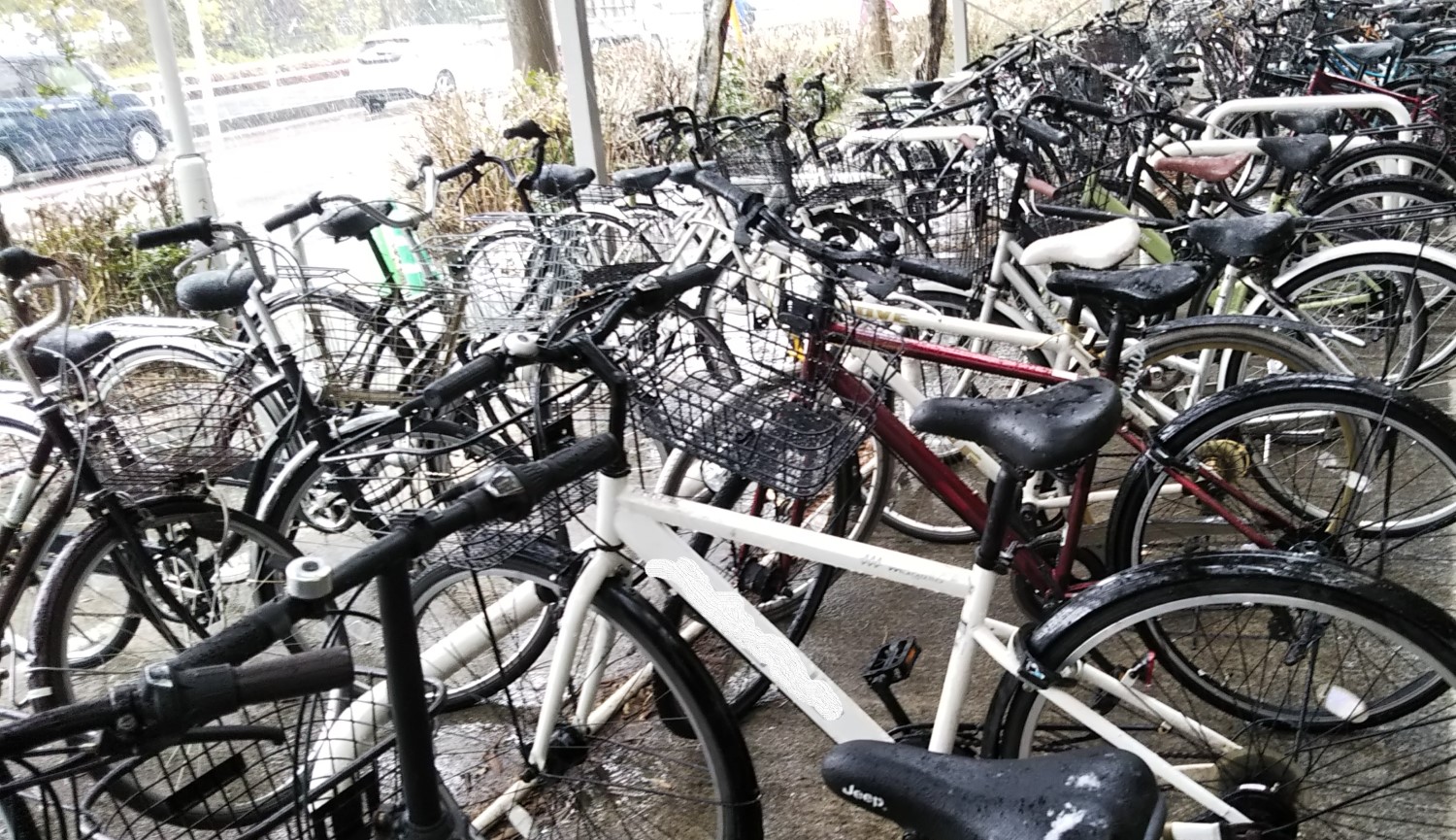
Four hundred forty-five bicycles were stolen in Chigasaki in 2023, up 35 bicycles from a year earlier. The figure, 445, corresponds to 18.5 bicycles per 10,000 citizens, which is far larger than the prefecture’s average of 12.6. The bicycle theft accounted for 68% of all 654 theft cases in the city. The bicycle is a very convenient means of transportation in the city, and its convenience probably lures thieves and even ordinary people to stealing.
In Fujisawa and Hiratsuka, 15.7 and 18.0 bicycles per 10,000 citizens were stolen, respectively last year. For other cities’ data, go to
https://www.police.pref.kanagawa.jp/kurashi/gaito_hanzai/mesd0066.html
As for data on all crimes in the city, go to
https://www.police.pref.kanagawa.jp/ps/chigasaki/toukei_jiken.html
To lock your bicycle is the fundamental measures to prevent theft, but even locked bicycles are stolen. If thieves think it would take time to break antitheft devices, your bicycles will be less likely to be stolen. Experts say we should use two locks: a wirelock in addition to a ringlock. A bicycle cover may be useful to make thieves turn their eyes away from your bicycle. No matter how simple your idea is, it may be effective. Not to lose the battle of wits, do anything you think of.
Flowers of the Season: Pansy
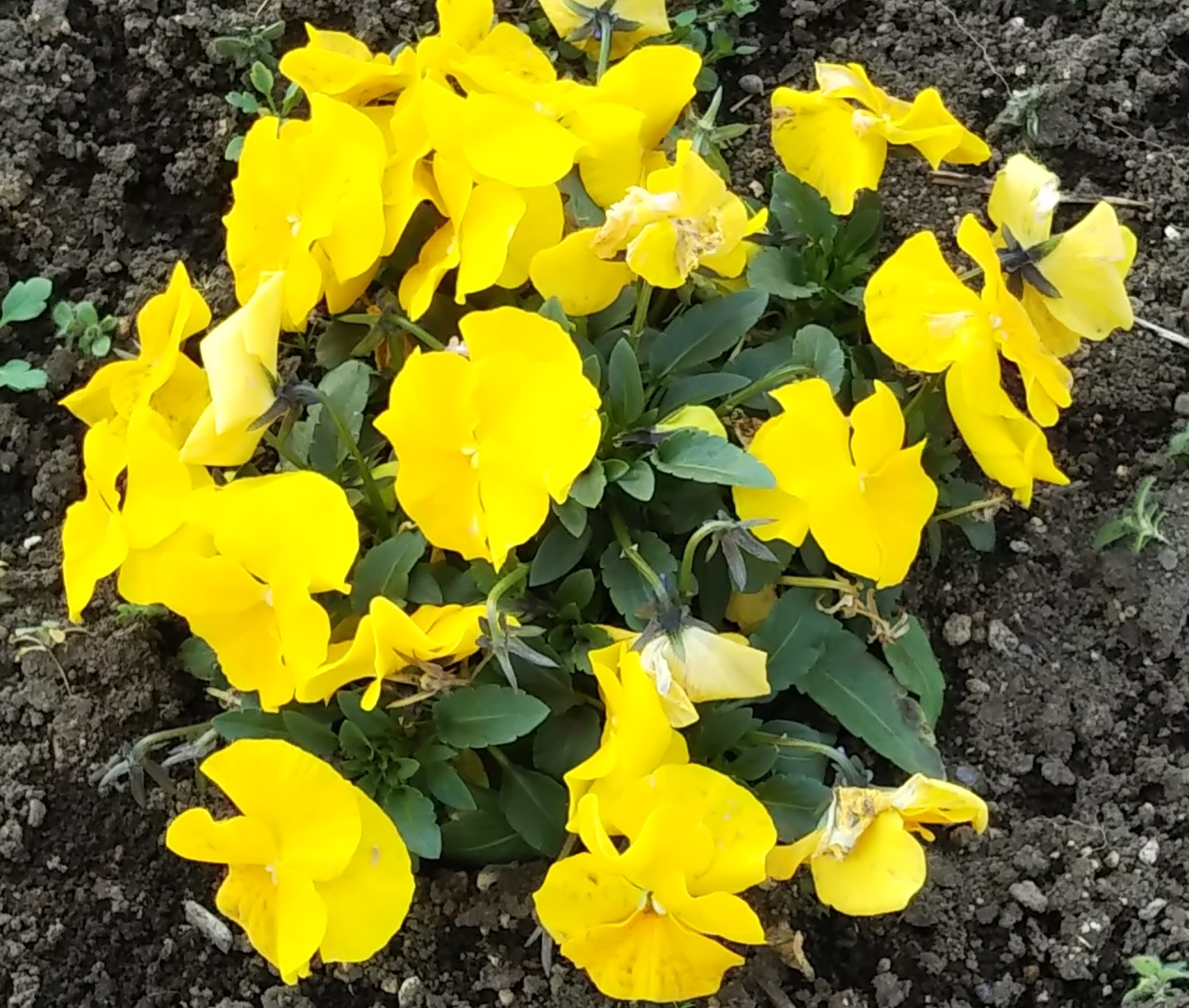
Japanese people across the nation plant various kinds of pansies in their gardens in autumn. Pansies are resistant to cold, and their stocks, stems, leaves and flowers endure freezing temperatures. They produce flowers of various colors from winter to spring, but wilt when the temperature starts rising.
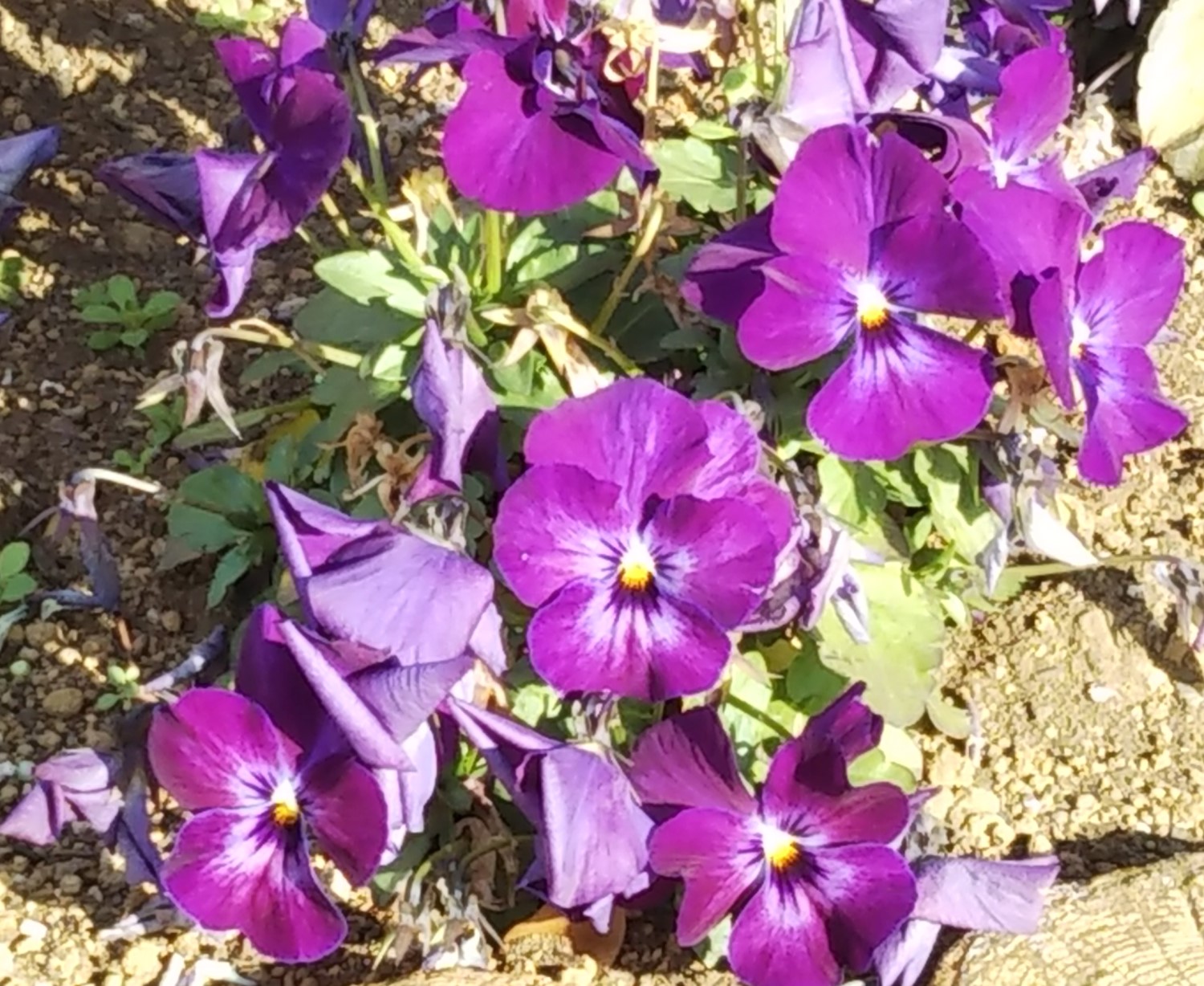
Pansies and violas belong to the same section and produce similar flowers. The species with bigger flowers is called pansies and the other with smaller flowers is called violas. The flowers of pansies somewhat resemble “The Thinker” by Rodin, and the name ‘pansy’ was derived from the French word ‘pensée (thought)’.
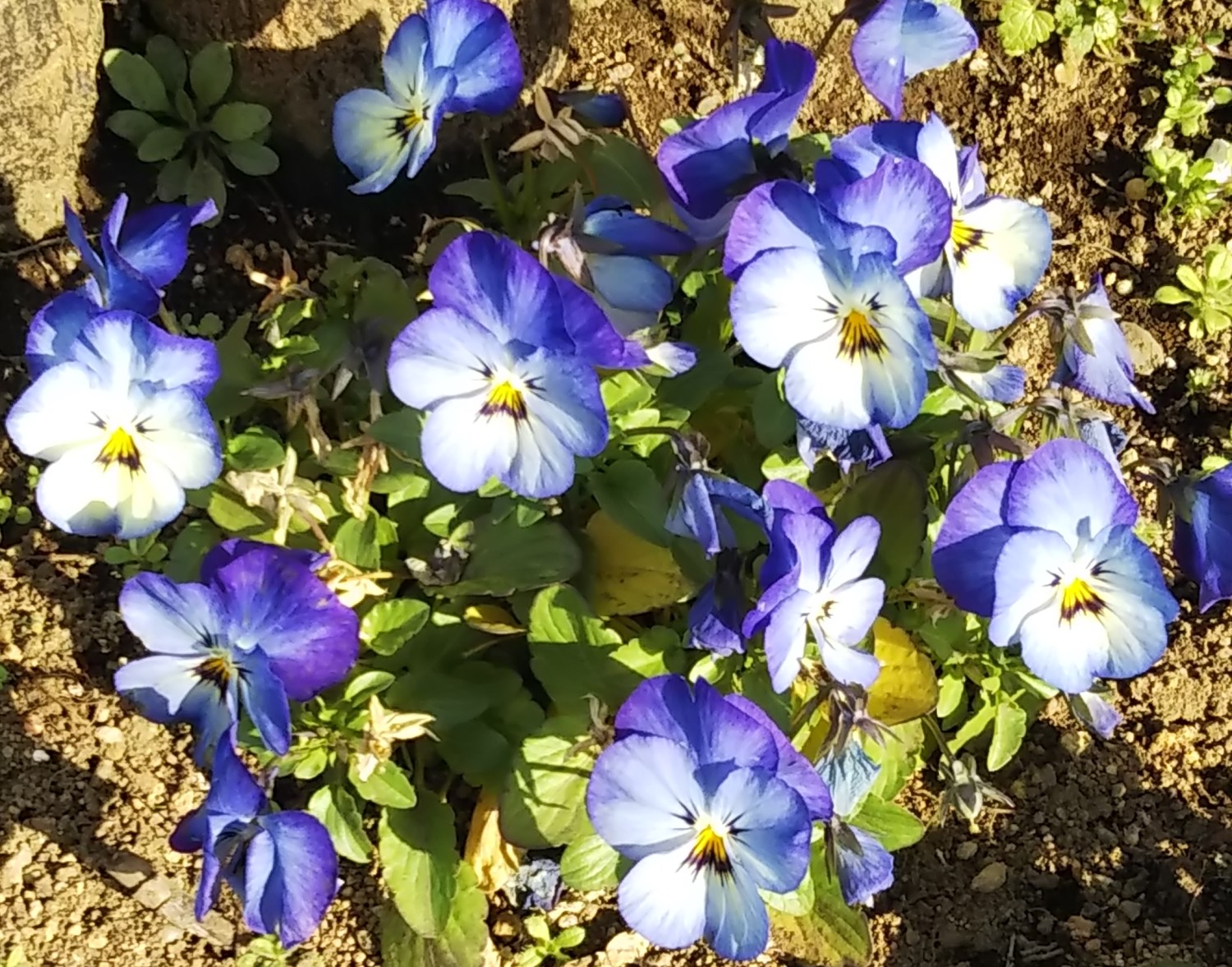
In the 1800s, Europeans wanted to create a gregarious pansy with big fluorescent violet flowers. They made many attempts at breeding and crossing using wild viola tricolor. As a result, 400 varieties of pansies had become popular for ornamental purposes by 1835. In addition, in the Victoria era (1835~1901), the Industrial Revolution enabled people to use steel, and therefore greenhouses spread explosively, which resulted in the creation of today’s brilliant colorful pansies.
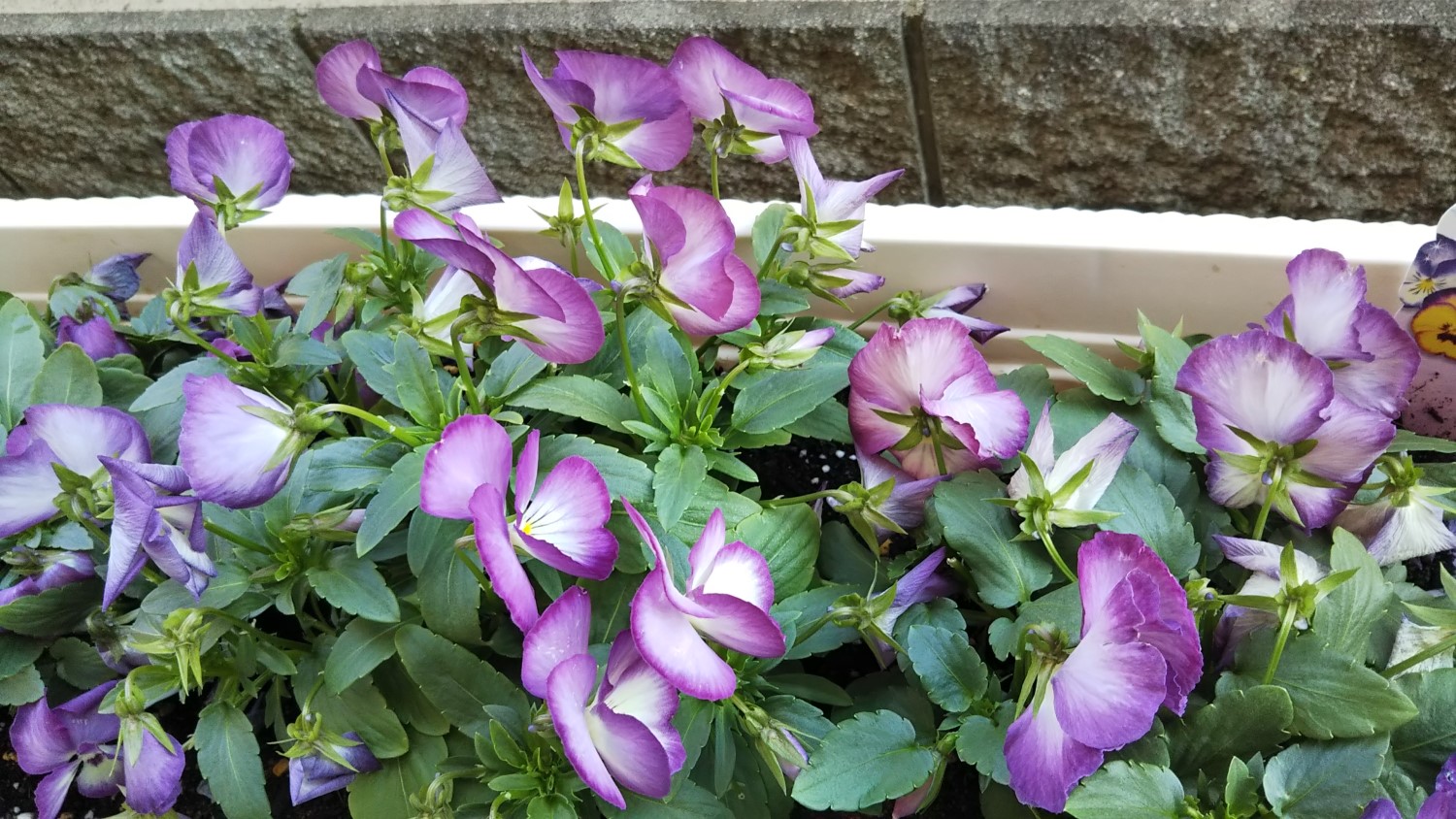
It is said pansies came to Japan at the end of the Edo period, and people began enjoying many kinds of pansies in the 1970s. They usually buy potted nursery plants in autumn and transfer them to planters or gardens. The annual plant is fond of sunshine and gardeners can enjoy its flowers during November to May. Flowers’ colors are wide-ranging such as yellow, orange, red, violet, blue-purple, white, black and those mixed. Now, new varieties are created by nursery companies and persona breeders. By the way, the word ‘pansy’ appeared in Shakespeare’s (1564 ~ 1616) drama ‘A Midsummer Night’s Dream’ and ‘Hamlet’ but they were wild viola tricolor.
Invitation to Kamakura (36) - Winter Flowers (Bimonthly serial)
Flowers have power. When we see flowers, they have a positive and powerful impact on our health, well-being, and happiness. No matter how saddened we are, flowers put a smile in our heart. In Kamakura, there are flowers blooming brilliantly unbeaten by cold wind - daffodils, wintersweets or roubai in Japanese, and camellias. Why don’t you stroll around Kamakura?

You might think that daffodils are native to Japan, but they originally came from southern Europe such as Spain and Portugal, and North Africa. They were introduced through the Silk Road into Japan in the Heian era (794 ~1185). The scientific name of the daffodil, Narcissus, is believed to come from the Greek myth of Narcissus who fell in love with his reflection on a pond.
Here is a recommended walking course for daffodil viewing in Kamakura: Kitakamakura station ->Tokeiji Temple -> Jyochiji Temple -> Kaizoji Temple -> Jyokomyoji Temple -> Kamakura station-> Zuisenji Temple. You will be enveloped by fragrant scents.

Wintersweets are deciduous shrubs with delicate and translucent flowers. They are native to China. The strongly scented pendent flowers bloom in winter on bare branches. The flowers with yellow or pale green-yellow petals and a purplish red core seem to be made of beeswax, so it is called roubai (wax plum) in Japan. We can see them in Engakuji, Tokeiji, Jyouchiji, Meigetsuin, Kousokuji, Houkaiji and Hase-dera Temples. The beautifully colored flowers add some charm to the wintry scene, signaling spring will come soon.

Camellias, whose scientific name is Camellia japonica, are found in Japan, Korea, China, and Southeast Asia. They are flowering and evergreen shrubs or trees (usually 4.9 -19.7 ft tall), growing in a laurel forest. The first-ever written account of camellia in Japanese history is Man-Yoshu or Myriad Leaves, which is the oldest collection of Japanese poems, in the 8th century. Camelia Japonica was introduced into Europe by Engelbert Kaempfer, a German naturalist and physician, and a chief of the fleet of the Dutch East India Company in 1692. And then, George Joseph Kamel, a Jesuit missionary, brought seeds of camelias into Europe in the 18th century. The flower is named after him. We can have a relaxing time, seeing camellias in Hase-dera, Houkaiji, Eishouji, Kousokuji, and Zuisenji Temples. Hopefully spring will come sooner on the earthquake-devastated regions in Ishikawa Prefecture.
All photos were taken at Houkaiji Temple
History of Chigasaki: Serizawa Village (1)
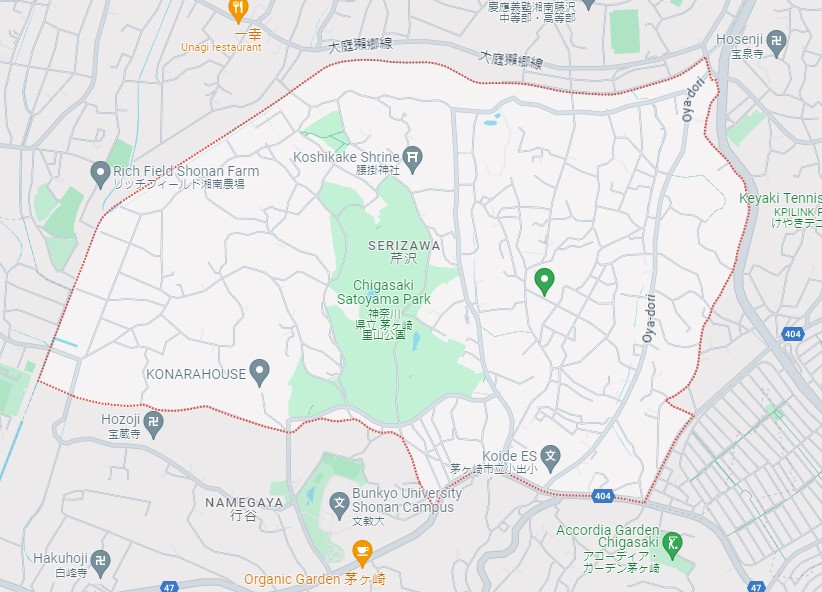
Serizawa Village was established by the Tokugawa family at the end of the 16th century. The village existed until it was renamed Koide Village in 1889.
Serizawa Village was located at the northernmost area of today’s Chigasaki, and spread out on the north-facing slope of the Koza Hill. To the north of Serizawa, there is Uchimodori Village, which is in Fujisawa today. The Koide River bordered Serizawa and Uchimodori Villages. The Koza Hill is highest at the location of Koide Primary School. Rivers flowing down from there carved the hill and have formed valleys called yato. As the rivers flow northward in Serizawa Village, yato opens to the north. Part of yato near the school is called yatogashira, the highest point of yato. Villagers built their houses in yato: at the foot of the hill, and in front of paddy fields.
Ieyasu Tokugawa, who ruled Kanto and Izu, inquired about the land of each village in 1591. There still remains a record book named “Serizawa go yashiki tsubo cho in 1594” (Serizawa district household area in 1594), which recorded all 65 villagers’ houses and estates. The area of the largest estate was 2,376 square meters. Only “Estate Steward” was written in the space for the house owner. As the name of the steward was not recorded, it is unknown who was the estate steward.
There is an old picture probably drawn in the late 17th century.Yato is dotted with houses, and they are grouped by their lords. In those days, lords were the Toda family and Ozawa family, both of which were direct retainers of the shogun. The Toda family supervised 36 households, and the Ozawa family 19. Today public facilities and private houses gather around Koide Elementary School, and the place has become the gateway to Chigasaki, but in those days no houses were there. Settlements dotted in yato and along the Koide River.
Short Essays on Chigasaki-8 Village headman in Yanagishima, Toma Zengoro (Ryuan) (The Early-modern Times)
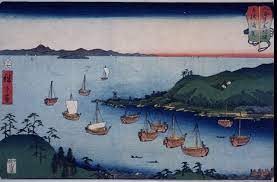
Toma Zengoro (Ryuan) was born in May 1801 as the first son between Toma Zenzaemon and his wife, Tsuru. Zenzaemon was the village headman in Yanagishima Village, Koza County, Kanagawa Prefecture. Zengoro renamed himself Ryuan in 1854. He wrote ‘Kamyaku chosaiki (家脈弔祭記)’, the death register of his family, and recorded that the original ancestor of the Toma Family was a man called Umanosuke, who died in 1466. This means he can trace his ancestors all the way back to the middle of the Muromachi era (1392-1573).
When Zengoro was three years old, his mother left the Toma family and he was raised by his grandmother. When he was 9, he started to learn writing, and when he was 11, he acquired ‘Shisho- gokyo (四書五経)’, the Four Books and Five Sutras in English. After that he learned calligraphy under the teaching of Hata Seichi, a calligrapher of the Edo period and his lifetime mentor. When Ryuan was 21, he married Mitome Tsuru (18) coming from Okada Village (Samukawa town at present), and they were blessed with two daughters.
The Toma family had been engaged in shipping businesses while making a living from agriculture since before him. He also set his heart on learning and writing books. He kept writing ‘Usou-zatsusho (雨窓雑書・10編 (1827-1881))’, 10 volumes of prose and poetical works over 55 years, ‘Nenchu-koshokuroku (年中公触録・7編 (1842-1896))’, 7 volumes of proclamations issued by the Edo government over 28 years, and ‘Taihei Nenpyo-roku (太平年表録・7編 (853-1872))’, 7 volumes of a chronology of political, diplomatic and social issues over 20 years. These books not only displayed his writing abilities but also depicted the upheaval from the late Edo Period to the Meiji Restoration in 1868.
The US East India Squadron commanded by Matthew C. Perry anchored off the coast of Uraga at around 5:00 pm on June 3, 1853. Getting information on the arrival of the Perry expedition, Ryuan headed to Uraga with his friends on June 6. They climbed a high hill in eastern Uraga, and witnessed four ships through a telescope. They were the first foreign ships he saw in his life. He depicted their features in a chronological table, ‘Taihei Nenpyo-roku (太平年表録)’ with illustrations, “I saw two big black steamships with windows of cannons and paddle wheels, following two small boats. The ships looked like castles. When they went forward, left and right, paddle wheels were turned by burning coals. The smoke looked like black clouds.”
At that time, Sakuma Zozan, Yoshida Shoin, and others who were interested in the black ships gathered in Uraga, and watched the course of events. Ryuan was one of them. As soon as he returned to his village late at night on June 8, he recorded what he had seen in Uraga, and continued writing what happened on Perry’s ships through information he obtained from other people.
He passed away in April 1883 at the age of 81. He sleeps at Zenpukuji Temple under a tombstone on which ‘Ryuan’ is engraved.
(The source of the essay: Chigasaki People’s Book published by Chigasaki City.)
Short Essays on Chigasaki-9 Ansei Earthquake― Yanagishima Village and Tsunami & Cholera pandemic at the end of the Edo Period (The Early-modern Times )
Toma Ryuan depicted what happened when the Ansei Earthquake hit Yanagishima Village on October 2, 1855 in the ‘Taihei Chronological Table (太平年表録)’. When people heard the sound of a strong wind, almost immediately they felt the ground shaking. They were flabbergasted and started running around. Ryuan was worried that tsunami would come soon, because he knew many people had been washed away by tsunami and lost their lives when an earthquake had occurred in Kansai in the previous year of the Ansei Earthquake. But fortunately, it didn’t. He checked buildings in his compound the next morning, and found they were sound and safe except for small cracks on earthen walls of storehouses. An adjacent village to Yanagishima had a similar situation, meanwhile in Ichinomiya Village (currently Samukawa-machi), storehouses’ walls fell down. There were many damaged houses in Atsugi and Fujisawa, but there was only slight damage in Odawara.
Ryuan recorded what happened when cholera spread around Yanagishima, Katase, Enoshima and Kugenuma in July, 1858 in the ‘Taihei Chronological Table’. He wrote, “The epidemic broke out in five territories in the vicinity of the capital and five imperial areas (五畿内, Go-kinai), including Omi, Mino, Tanba. It prevailed in Mikawa, Totoumi, and Suruga, and then reached Edo through outbreaks in Izu and Odawara. Rumors circulated that feudal lords’ visits to the capital spread the epidemic. Infected people felt dizzy, fell over, suffered from severe vomiting and diarrhea, and died in a day or two like a dead tree.”
五畿内: the five place the Imperial Palace was located, Yamato, Yamashiro, Kouchi, Izumi, Settu

He described as follows:
In Yanagishima, three to four people died due to severe diarrhea. Some believed outbreaks of epidemic were due to a fox’s mischief, and asked practitioners of mountaineering ascetics (Shugensha) to pray for the patients. Some solicited the guardian deity of the Ontake-san (御嶽山信仰) in Musashi, and received a talisman of wolf, saying, “Foxes and raccoon dogs do evil, so we need to drive them out.” Others made a wish to the Ohyama Fudoson. All villagers, young and old, prayed for beating the epidemic to the Fudoson at Zenpukuji-Temple and Jizo-in, while chanting spells. Thanks to residents’ prayers, the epidemic finally abated, and patients were cured. If another epidemic came again, we would have nothing to do but pray for divine protection.
(The source of the essay: Chigasaki People’s Book published by Chigasaki City)
Interested in Japanese proverbs?
1) 昨日の淵は今日の瀬 (KINOU NO FUCHI WA KYOU NO SE)
KINOU means yuesterday, NO is a postposition, FUCHI means deep pool, WA to be, KYOU today, NO a postposition amd SE means shoal.
The proverb literally means yesterday’s pool is today’s shoal. A place which used to be a deep pool can become a shallow overnight when the river flow changes. Figuratively it means the world is always changing so that no one knows the future of people and things.
A recent secret fund issue has led the Abe faction, once the LDP’s most powerful group, to dissolution. Only a year and a half has passed since the leader of the faction and the former prime minister, Shinzo Abe, was killed in 2022. The faction’s senior members have lost their positions and are criticized by the media almost every day. They had played important roles in political circles until just recently.
The proverb is in Kokin Wakashu (古今和歌集), a collection of ancient and modern poems, completed in 905.
Its English equivalents are:
●Life is full of vicissitudes.
●Nothing is certain in the world.
●The mirth of the world endures but a while.
2) 気は心 (KI WA KOKORO)
KI means an intention, WA is to be and KOKORO means mind.
You can get across your sincerity to him (her) by giving them a present. And when you give a gift to them, a small thing with good quality is better than a bulky thing with low quality.
When Valentine’s Day is drawing near, chocolate of various sizes, shapes, and prices are displayed at confectionery stores. The writer once saw in the US that men and women presented flowers to their friends or partners on the day. Perhaps a bouquet is less expensive than good-quality chocolate, but KI WA KOKORO. Next year, how about dividing your budget into two, and presenting chocolate with flowers to him. The new style present will make you quite different from other women.
The proverb is in Kefukigusa (毛吹草), an introductory book to making literary works, completed in 1645. Its English equivalents are:
●Nothing so bad as not to be good for something.
●Nothing so bad but it might have been worse.
●Everything is good for something.
Events in January and early February
Calligraphy Exhibition
A calligraphy exhibition by Gagetsu and Hogetsu Calligraphy Schools took place at Citizen Gallery from January 19 (Fri) ~ 21 (Sun).

Members in various age brackets, from elementary school children to the middle-aged and elderly, wrote their hopes, favorite words and Chinese poems. Children in the lower grades wrote their desires. Some of them wanted to become good players of basketball, karate, baseball, and other sports. Others want to become an architect, a comic writer, a nursery school teacher, a ballerina, and many more. May they realize their desires.

Those in upper grades selected two kanji which they are now interested in. Many adults wrote their New Years’ resolutions.
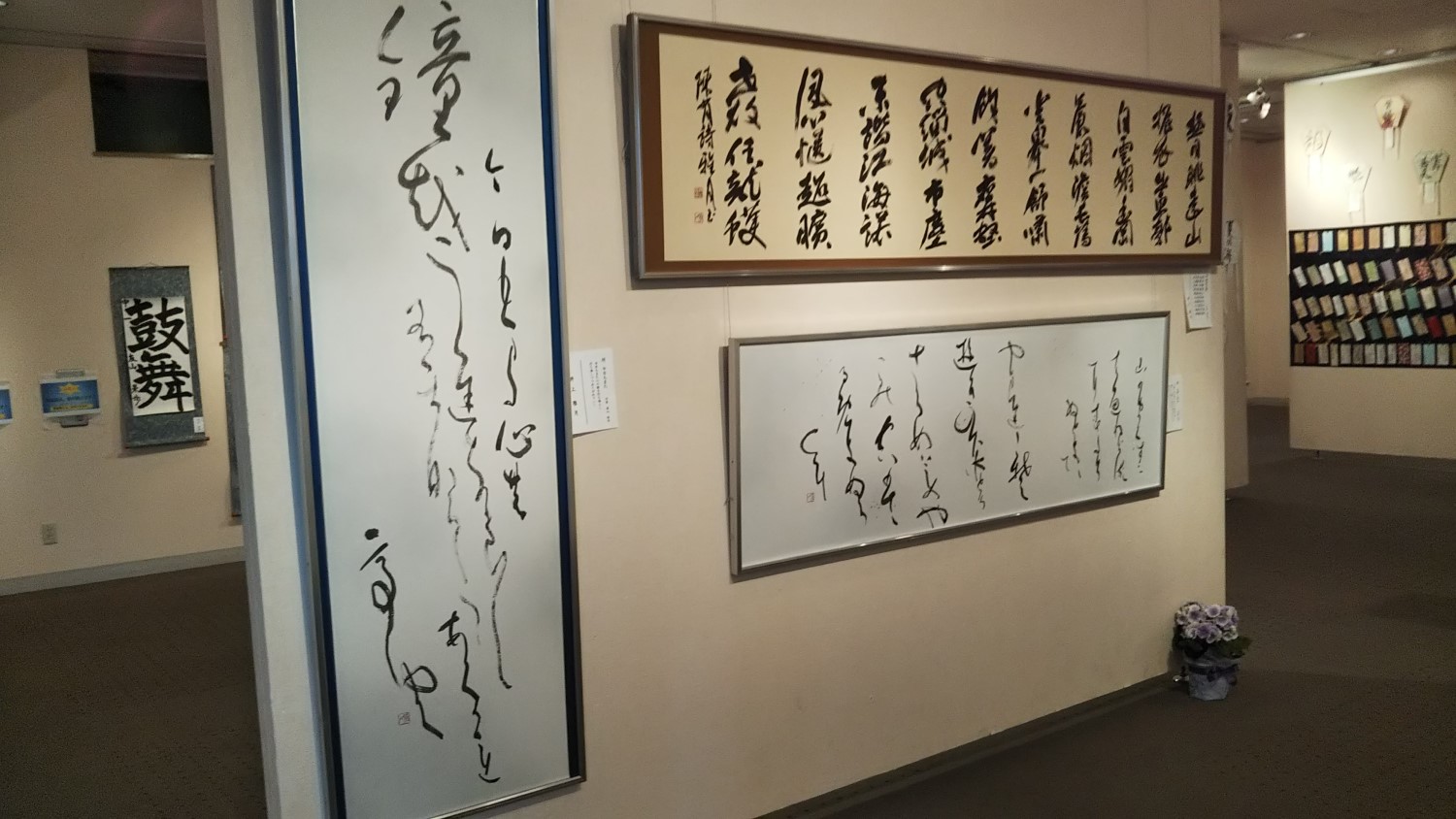
These works tell us interests, hopes, and desires provide vitality for people of all ages.
For more photos, go to
http://gagetu.la.coocan.jp/
Bean scattering at Samukawa Shrine
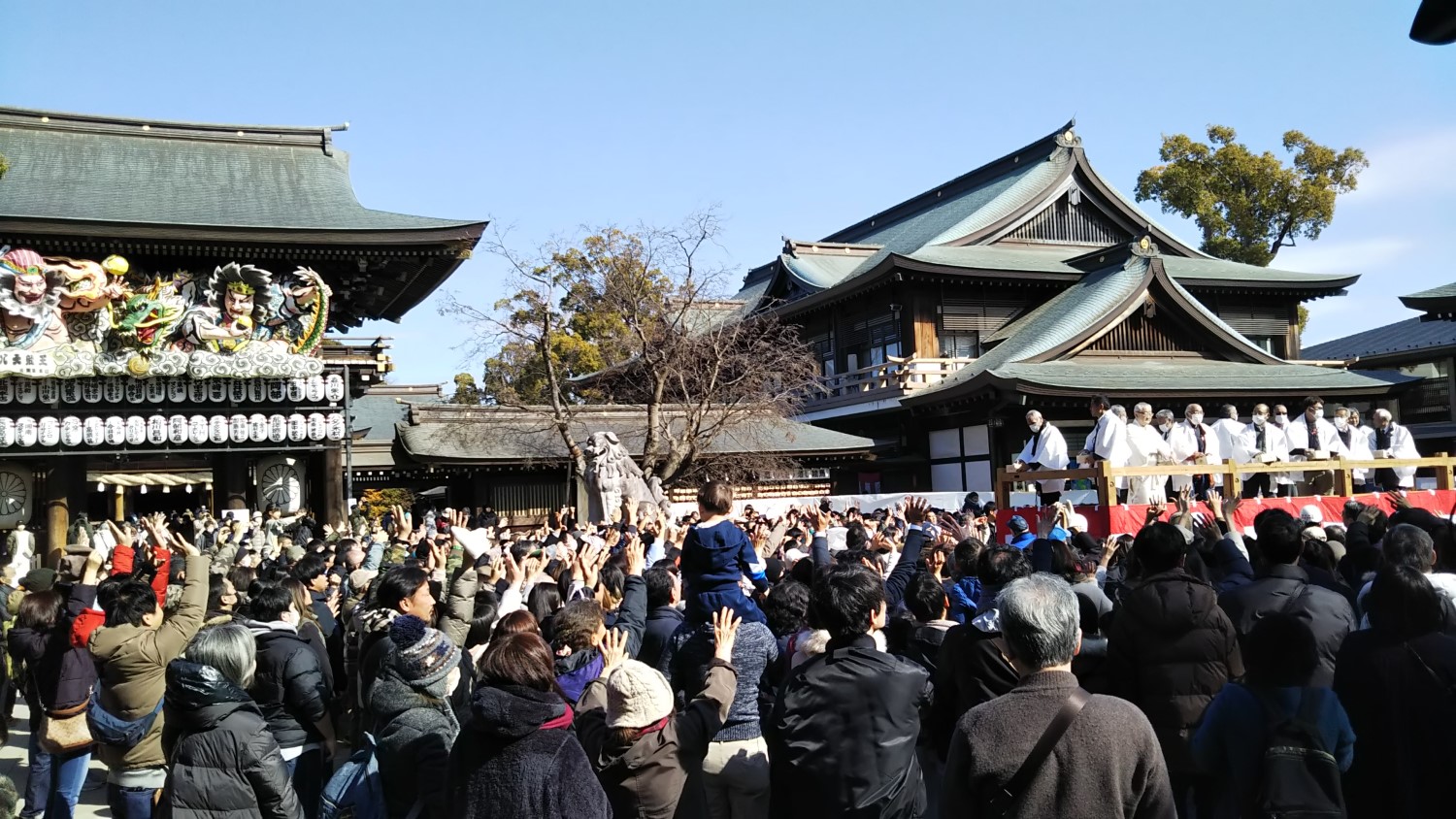
Men and women who were born in the year of the Dragon in Chinese astrology scattered parched beans from the stage on February 3.
The traditional ceremony was conducted on the day before the first day of spring to drive out misfortune. The square in front of the main gate was filled with people who wanted to catch the beans and spectators. The festival also means the beginning of normal lives, and spring is just around the corner. The bean-throwing ritual for the first time in four years was conducted two times at 11:00 and 14:00.
This year’s Nebuta, a gigantic float decoration on the main gate, featured Hachidai-Ryuo (八大龍王), which is believed to provide happiness and prosperity.
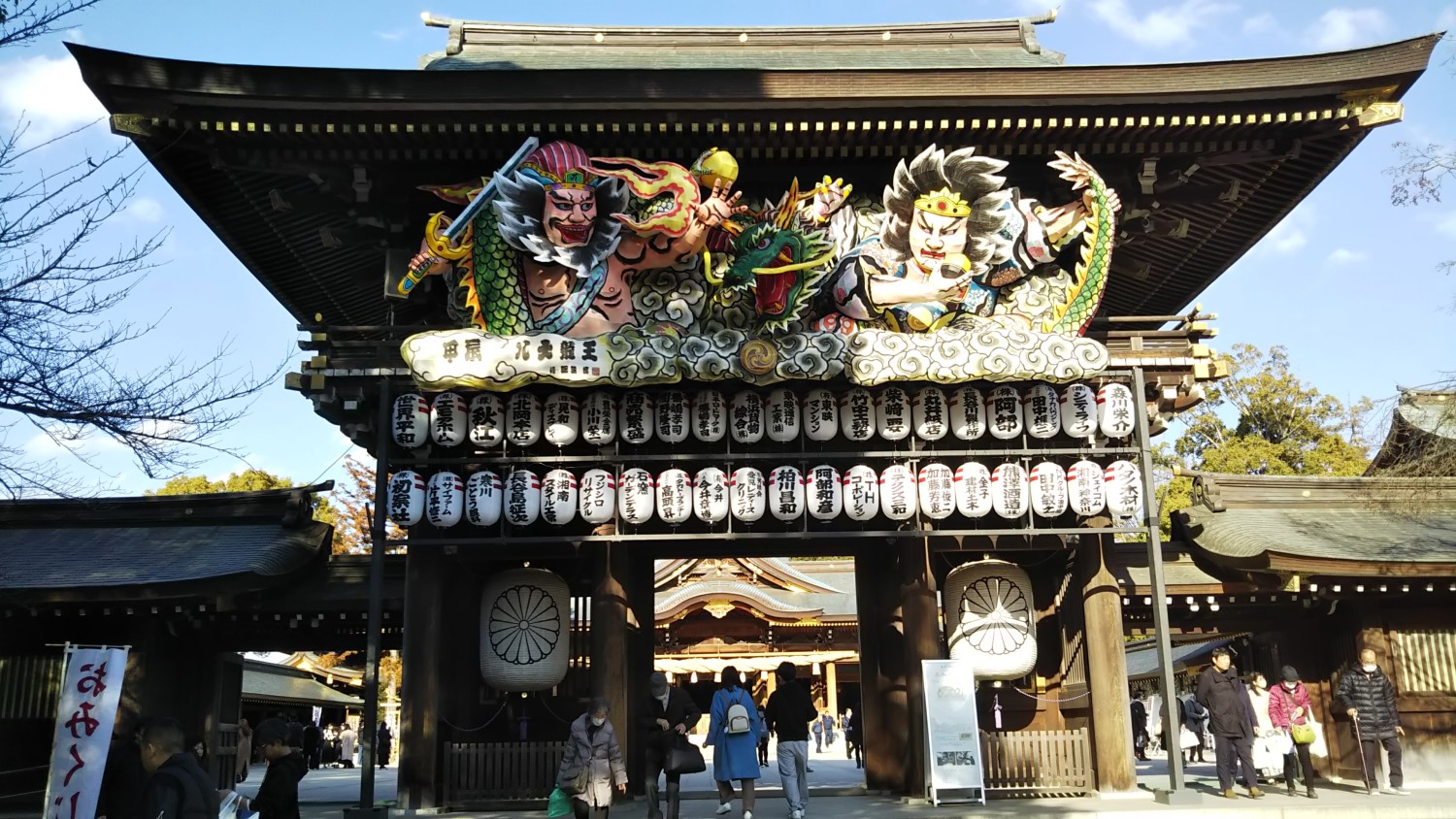
The 26th photo exhibition by Chigasaki Photo Friendly Club
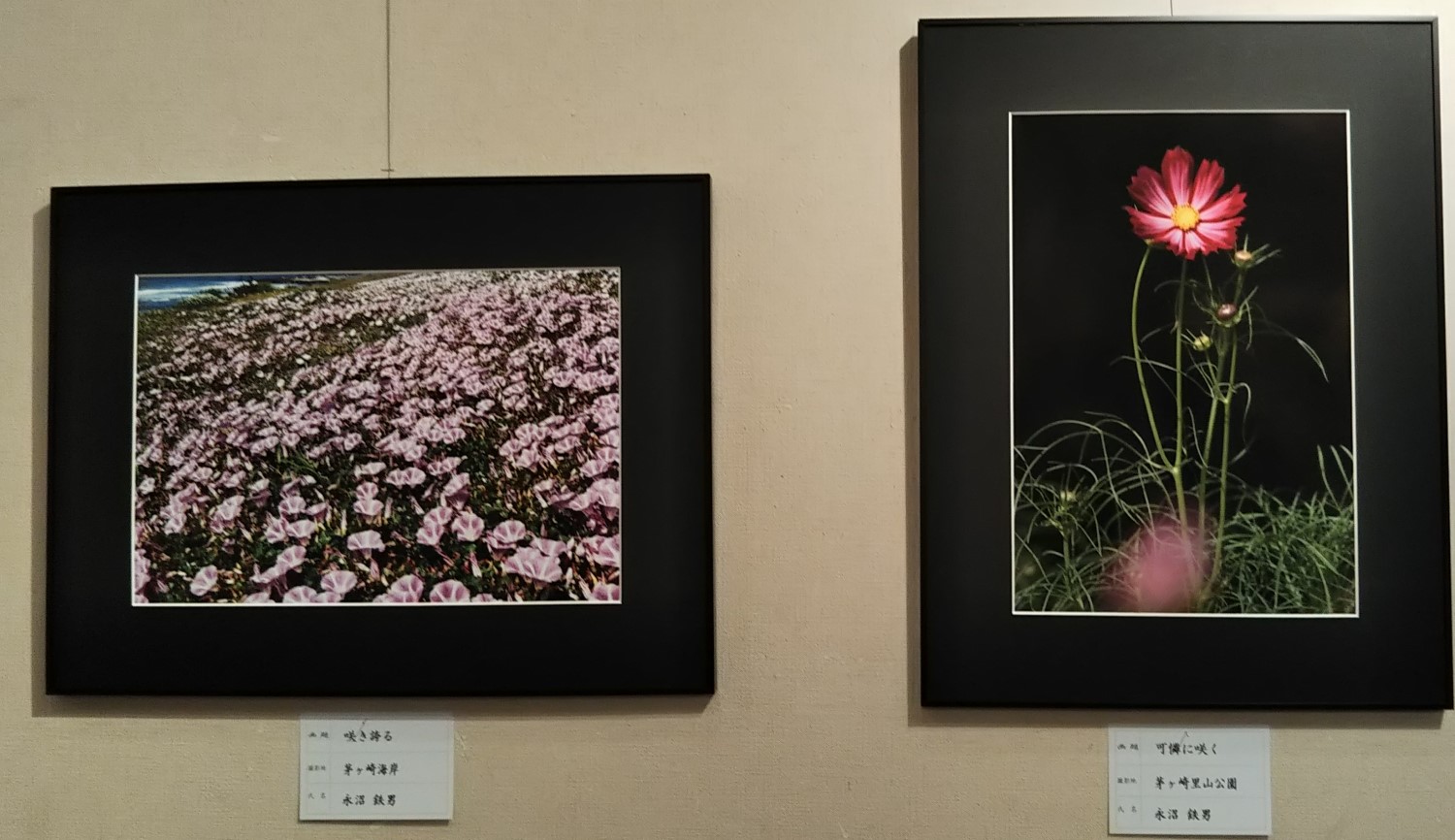
The photo exhibition took place at Citizen Gallery from Jan. 30 (Tue) to Feb. 4 (Sun). Seventy-eight photos taken by 13 members and a tutor were on display. Members took pictures at their favorite places for a free theme, and took scenery photos in Chigasaki as an assigned theme. Every photo was quite beautiful not only because they chose beautiful places, but because their photographic techniques are excellent. In addition, they are enthusiastic about taking beautiful photos.

The group hold monthly meetings and lessons at the Nango community center, and sometimes go on an excursion to places of scenic beauty. Many of them seemed to be elderly people, and they looked to get pleasure from their hobby. Each member explained their own photos to visitors, and visitors learned about their purpose, effort, trouble and so on.

Events in February and March
Citizen Gallery on the 4th floor of N’EST-CE PAS Chigasaki
● Indian ink poem and picture exhibition by Kira Shibuya: Mar 20 (Wed) to the 23rd (Sat) 10:30~18:00, the 24th (Sun) 10:30~19:00
City Museum of Art
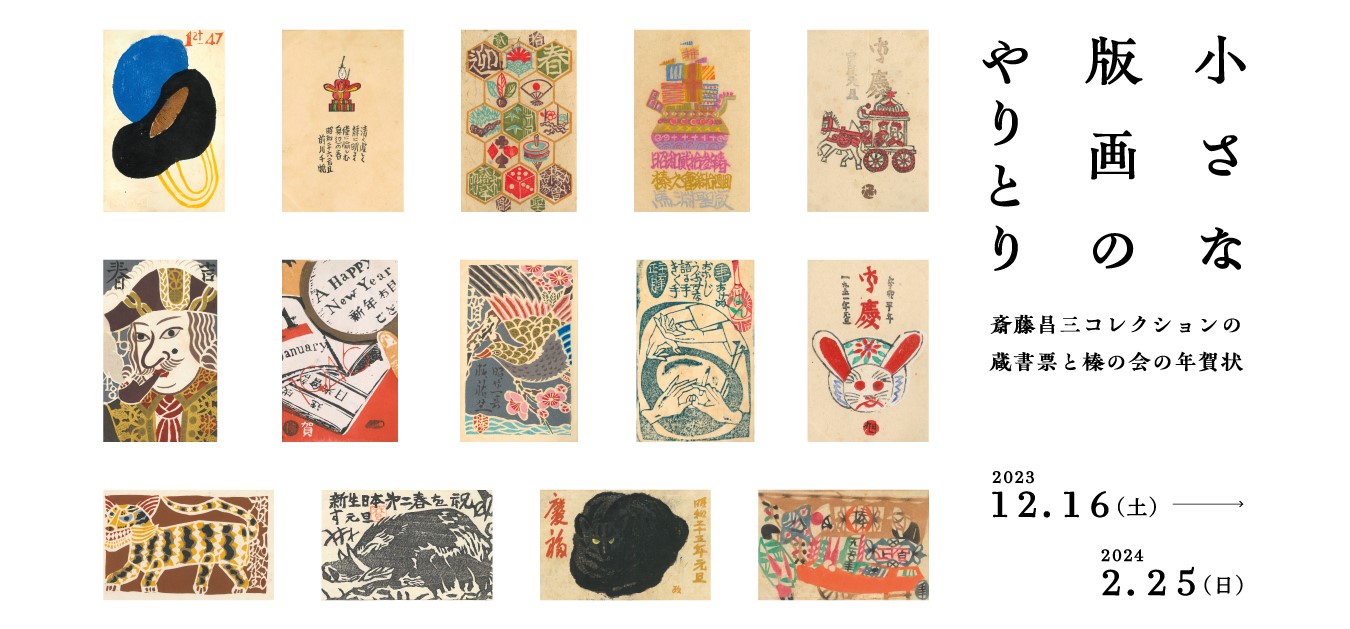
A Saito Shozo* collection is taking place now. Ownership slips, which are pasted on books to show the owners of the books, are on display. Saito (1887~1961) was the first person to spread the slip as art works. New Year’s cards written by famous artists are also exhibited. These artists are members of a group named “An alder,” consisting of 161 artists, including Takeo Takei and Shiko Munakata.
Entrance fee (yen): Adult 400, Uni. student 200, Citizens of age 65 and older 200, High school student and younger free. The exhibition is going to be held until February 25 (Sun).
*Saitou was born in Zama in 1887. After working for a raw silk company in Yokohama, he published magazines. He lost most of his fortune in the Great Kanto Earthquake in 1923, and then, he moved to Chigasaki. In April 1959, he assumed the post of honorary director of Chigasaki City Museum of Art. He died in November 1961.
Flower exhibition
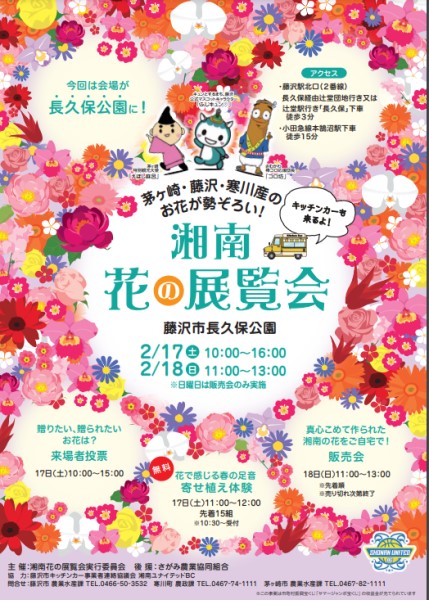
Flowers grown by floriculturists in Chigasaki, Samukawa and Fujisawa will be exhibited at Nagakubo Park in Tsujido, Fujisawa on February 17 (Sat) and the 18th (Sun). Visitors will enjoy colorful flowers, and voting for their favorite flowers. They can also experience container gardening. On the second day, visitors can buy exhibited flowers.
●Feb. 17 (Sat)
10:00~15:00 voting by 200 visitors who are accepted in order of arrival.
11:00~12:00, container gardening by fifteen people or groups, on a first come first served basis. Applicants will be accepted from 10:30.
●Feb. 18 (Sun) Exhibited flowers will be sold from 11:00.
Venue: Nagakubo Park in Ohiradai 2-13-35, Tsujido, Fujisawa